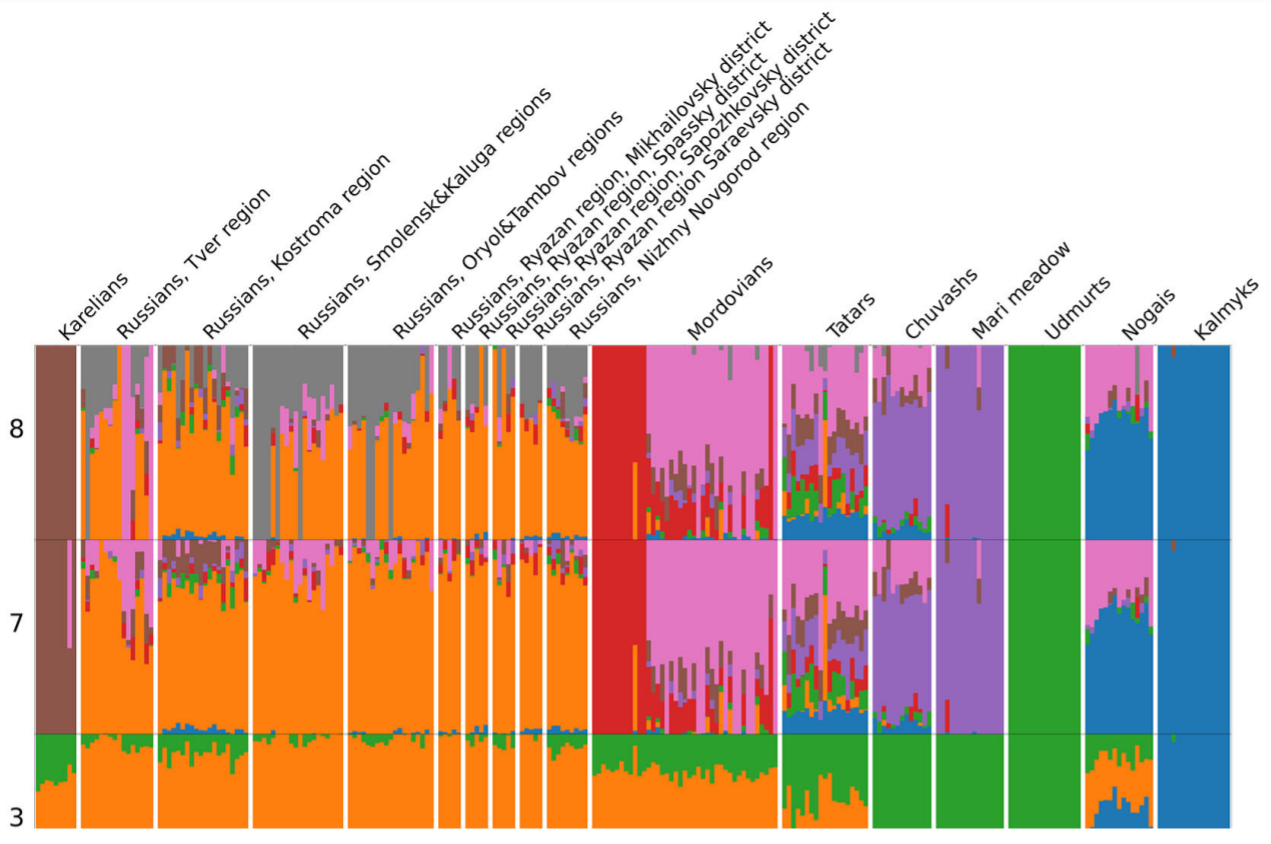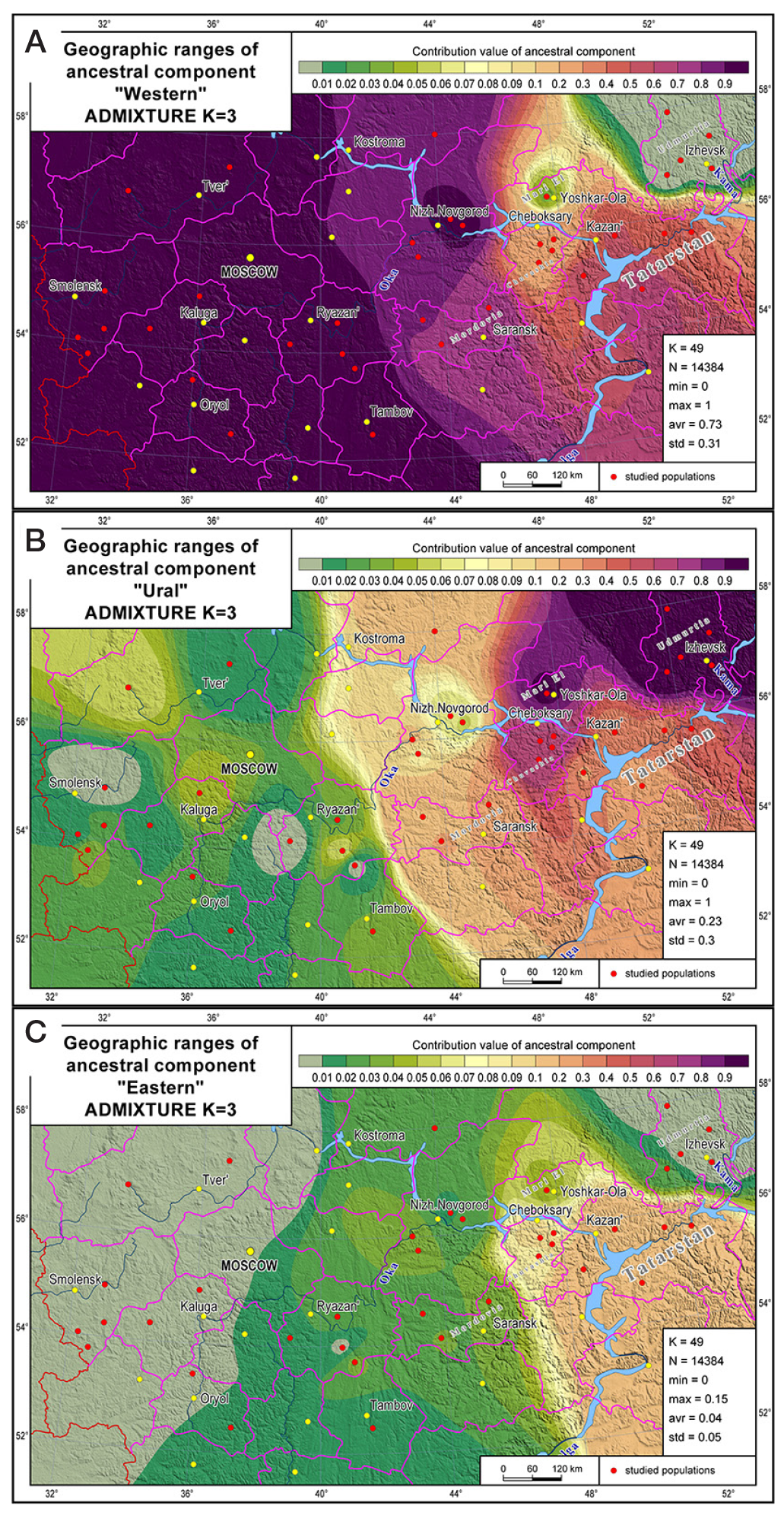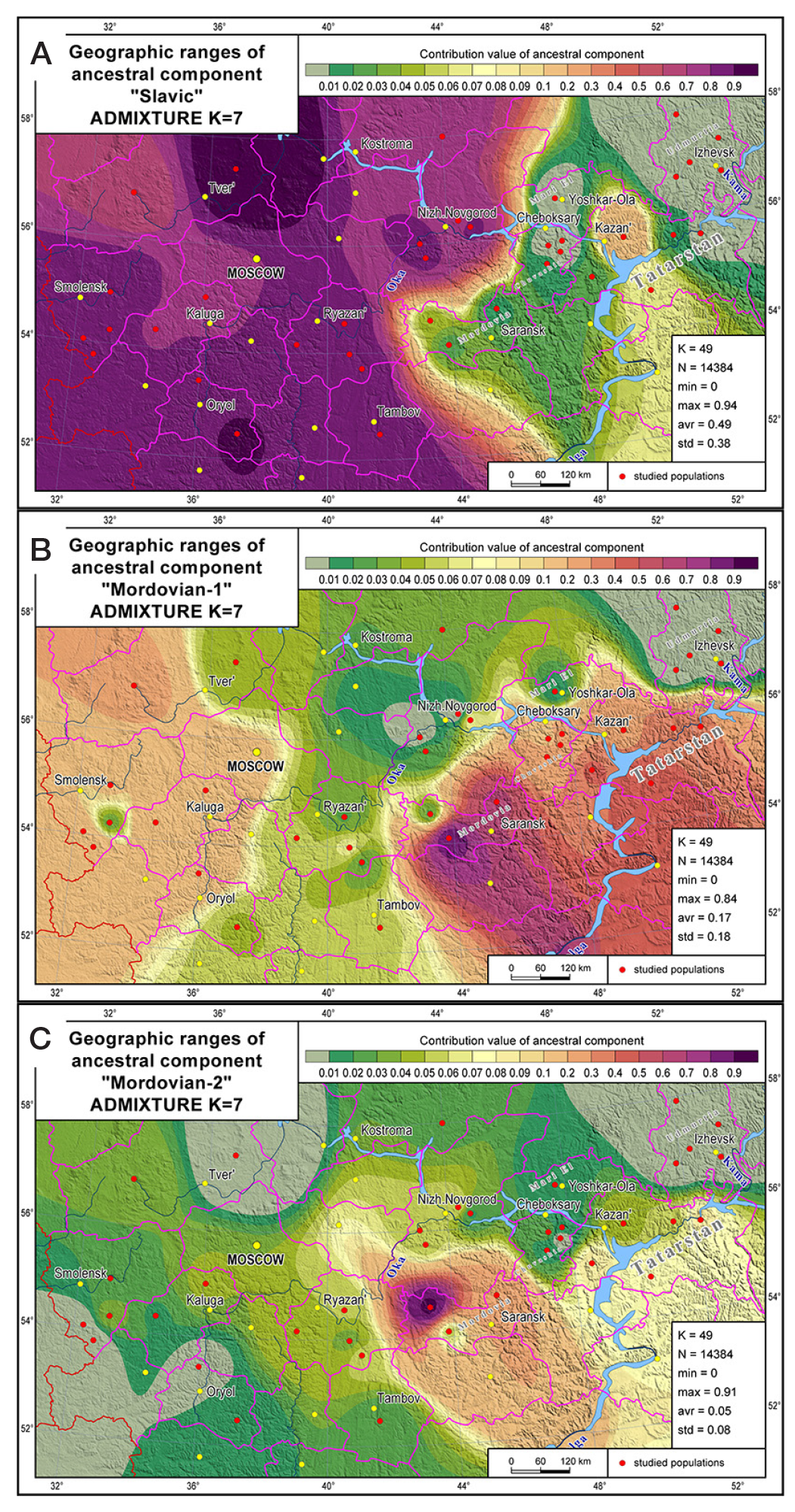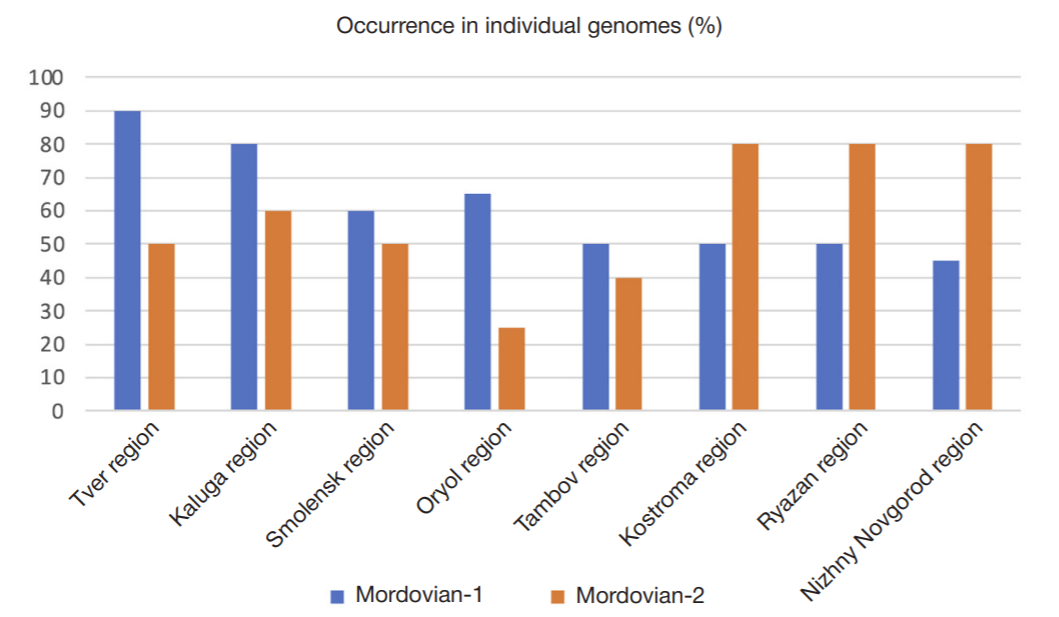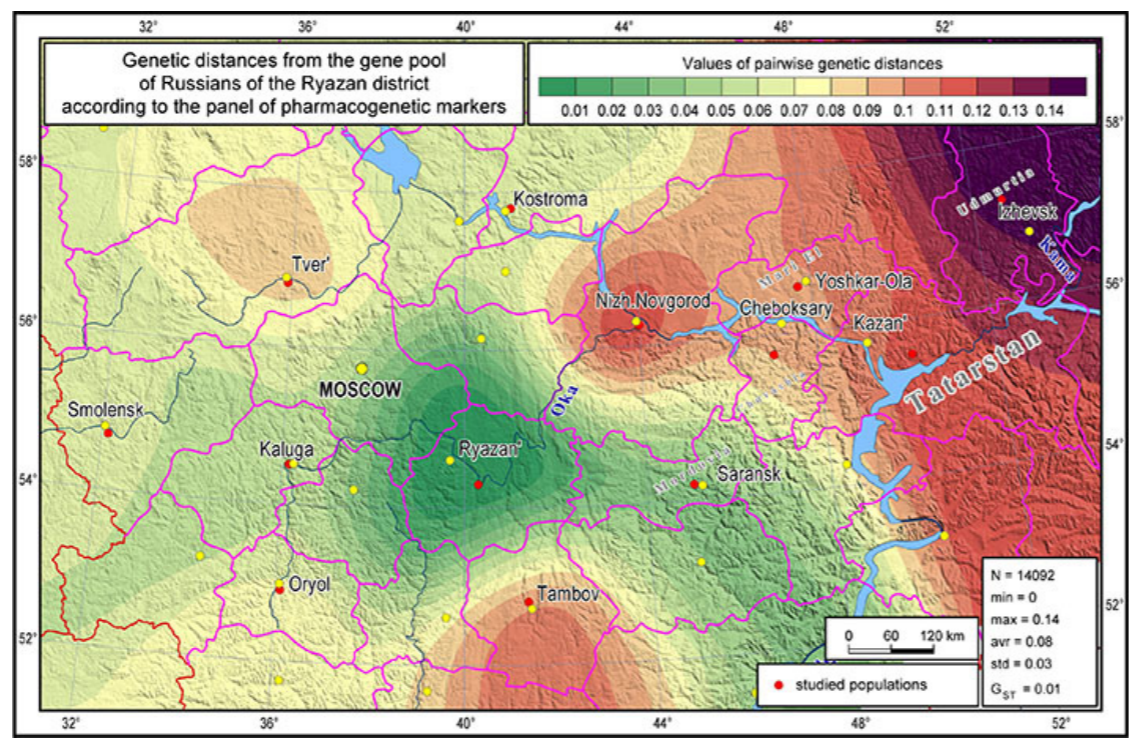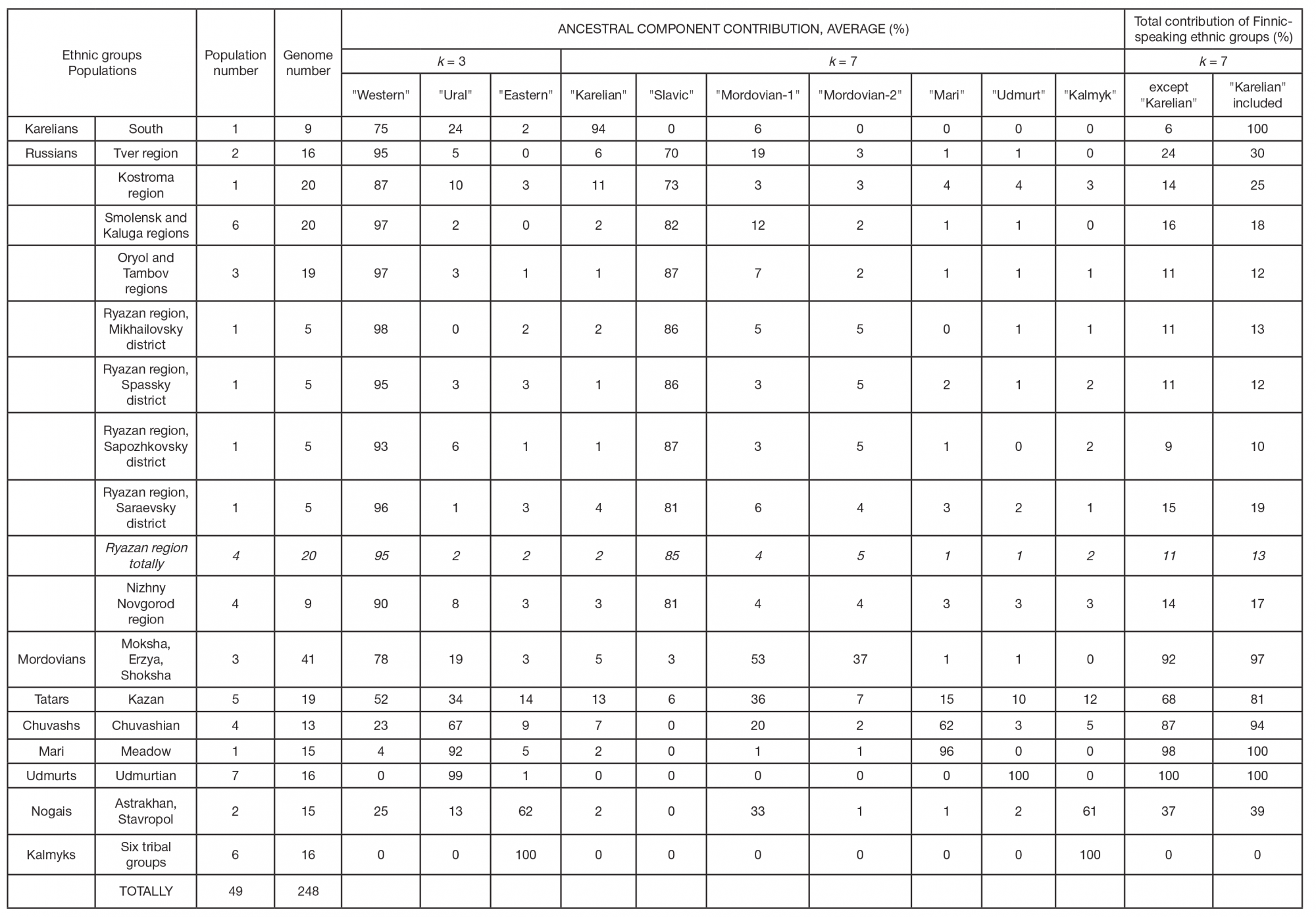
This article is an open access article distributed under the terms and conditions of the Creative Commons Attribution license (CC BY).
ORIGINAL RESEARCH
Footprints of interaction among Finniс-speaking, Slavic, and Turkic-speaking populations in modern gene pool and their reflection in pharmacogenetics
1 Bochkov Research Centre of Medical Genetics, Moscow, Russia
2 Vavilov Institute of General Genetics, Moscow, Russia
3 Biobank of North Eurasia, Moscow, Russia
4 Federal Research and Clinical Center of Physical-Chemical Medicine, Moscow, Russia
Correspondence should be addressed: Elena V. Balanovska
Moskvorechie, 1, 115522, Moscow, Russia; ur.liam@aksvonalab
Funding: the study was supported by RFBR grant 20-29-01017 Ancient DNA (bioinformatics analysis), RSF grant 21-14-00363 (analysis of pharmacogenetics markers), and State Assignment of the Ministry of Science and Higher Education of the Russian Federation to Vavilov Institute of General Genetics (cartographic analysis) and Bochkov Research Centre of Medical Genetics (data interpretation).
Acknowledgements: the authors thank all sample donors who participated in this study and the Biobank of North Eurasia for the access to DNA collections.
